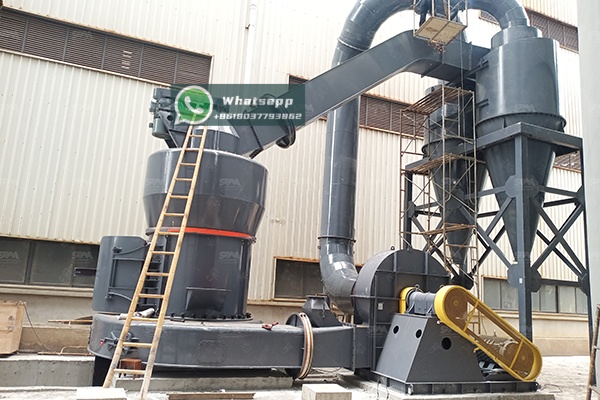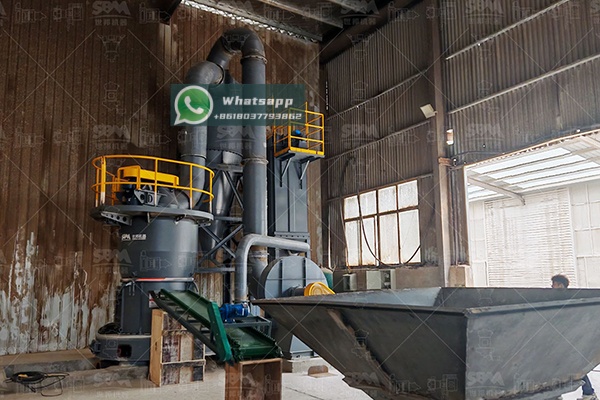In modern industrial processing, the journey of powdered materials doesn’t end at the grinding mill. While much attention is rightly paid to the comminution process itself, the subsequent handling, transportation, and storage of these fine powders present equally critical challenges that can significantly impact production efficiency, product quality, and overall operational costs. Understanding the science behind powder flow behavior is essential for optimizing post-mill operations.
Powder flow behavior is governed by complex interactions between particle properties and environmental conditions. Key factors influencing flowability include particle size distribution, shape, surface texture, moisture content, and chemical composition. Fine powders, particularly those produced by advanced grinding equipment, often exhibit challenging flow characteristics due to increased interparticle forces relative to gravitational forces.
The transition from free-flowing to cohesive behavior typically occurs as particle size decreases below 100 microns. This is particularly relevant for operations utilizing advanced grinding technologies that produce ultrafine powders. Materials processed through equipment like the LUM Ultrafine Vertical Mill or XZM Ultrafine Grinding Mill often require specialized handling solutions due to their extremely fine particle distributions.

Several problematic flow behaviors can disrupt industrial processes:
These issues become particularly pronounced when handling materials ground to ultrafine specifications. For instance, powders produced by equipment capable of achieving fineness levels below 10 microns, such as the advanced grinding solutions from Shanghai Zenith Machinery, require carefully designed handling systems to maintain product quality and process efficiency.
Shanghai Zenith Machinery Co., Ltd., as an excellent manufacturer of ore grinding equipment, has made significant achievements in the field of ultra-fine powder grinding. Their specialized research, development, and production of industrial powder grinding equipment directly influence the flow characteristics of the resulting powders.
The company’s comprehensive product range includes solutions tailored to different material properties and fineness requirements. For operations requiring medium-fine powders with excellent flow characteristics, the MTW Trapezium Grinding Mill offers an optimal balance of particle size distribution and production efficiency.
| Model | Max. Feed Size (mm) | Final Size (mm) | Capacity (t/h) | Main Motor (kW) |
|---|---|---|---|---|
| MTW110 | <30 | 1.6-0.045 | 3-9 | 55 |
| MTW138Z | <35 | 1.6-0.045 | 6-17 | 90 |
| MTW175G | <40 | 1.6-0.045 | 9.5-25 | 160 |
| MTW215G | <50 | 1.6-0.045 | 15-45 | 280 |
For applications demanding the finest possible powders, the LUM Ultrafine Vertical Mill represents the pinnacle of grinding technology, integrating multiple functions into a single, space-efficient unit while producing powders with controlled particle size distributions that are crucial for predictable flow behavior.
| Model | Main Machine Power (kW) | Capacity (t/h) | Size Distribution D97 (μm) |
|---|---|---|---|
| LUM1525 | 220-250 | 1.6-11.5 | 5-30 |
| LUM1632 | 280-315 | 2.0-13.5 | 5-30 |
| LUM1836 | 355-400 | 2.3-15 | 5-30 |
Proper silo and hopper design is fundamental to reliable powder discharge. Key considerations include:
The selection of appropriate storage solutions should consider the specific characteristics of the powder being handled. Materials ground using Zenith’s vertical mills, which integrate drying functionality, may have different moisture profiles compared to those processed through other technologies.

Various conveying technologies are available for transporting powders between processing stages:
The choice of conveying method should align with the abrasiveness, density, and fragility of the powder. For instance, materials processed through Zenith’s Ball Mill series might have different handling requirements compared to those ground in vertical mills due to variations in particle shape and size distribution.
Fine powders present significant dust explosion risks and health hazards. Comprehensive dust control strategies include:
The compact design of modern grinding equipment, such as Zenith’s MTM Medium-Speed Grinding Mill, can contribute to reduced dust generation points and more contained processing environments.
Effective powder handling extends to downstream operations such as mixing, packaging, and further processing. Consistent powder flow is essential for:
The controlled particle size distribution achieved by precision grinding equipment like Zenith’s XZM Ultrafine Grinding Mill facilitates more predictable behavior in these downstream applications.

The science of powder flow and handling represents a critical aspect of modern industrial processing that complements the grinding operation itself. By understanding powder behavior and implementing appropriate handling solutions, operations can achieve significant improvements in efficiency, product quality, and safety. The advanced grinding equipment from manufacturers like Shanghai Zenith Machinery provides the foundation for producing powders with consistent characteristics that facilitate reliable handling.
As grinding technologies continue to evolve toward finer powders and higher efficiencies, the corresponding handling solutions must advance in parallel. The integration of grinding and handling systems as a cohesive unit, rather than separate operations, represents the future of optimized powder processing facilities.